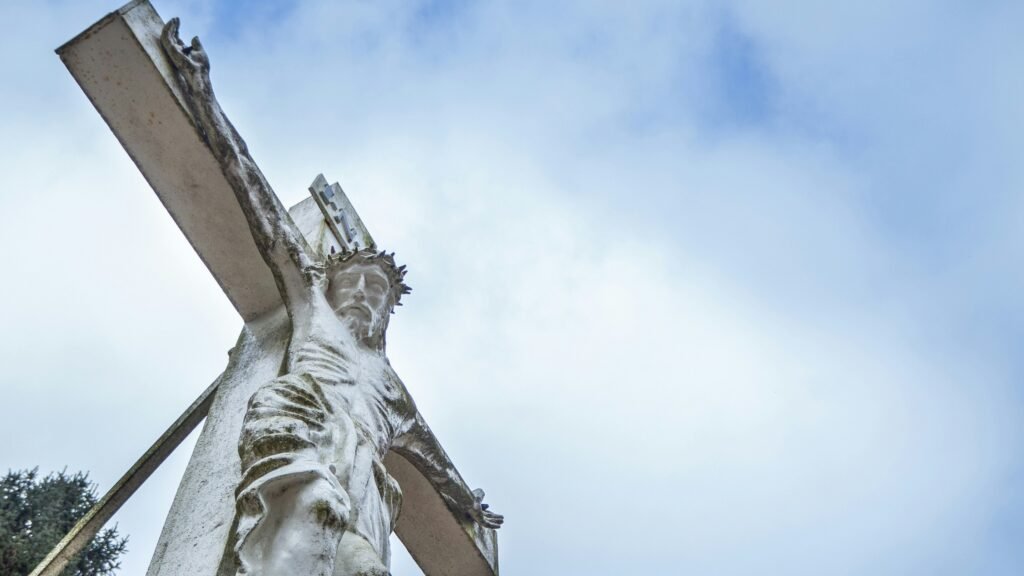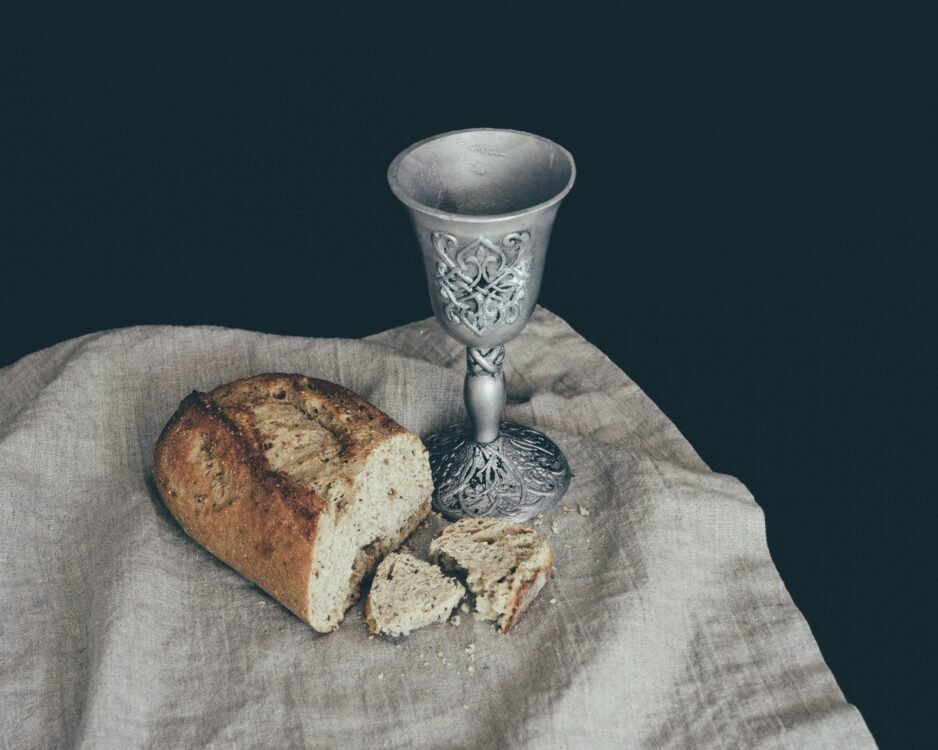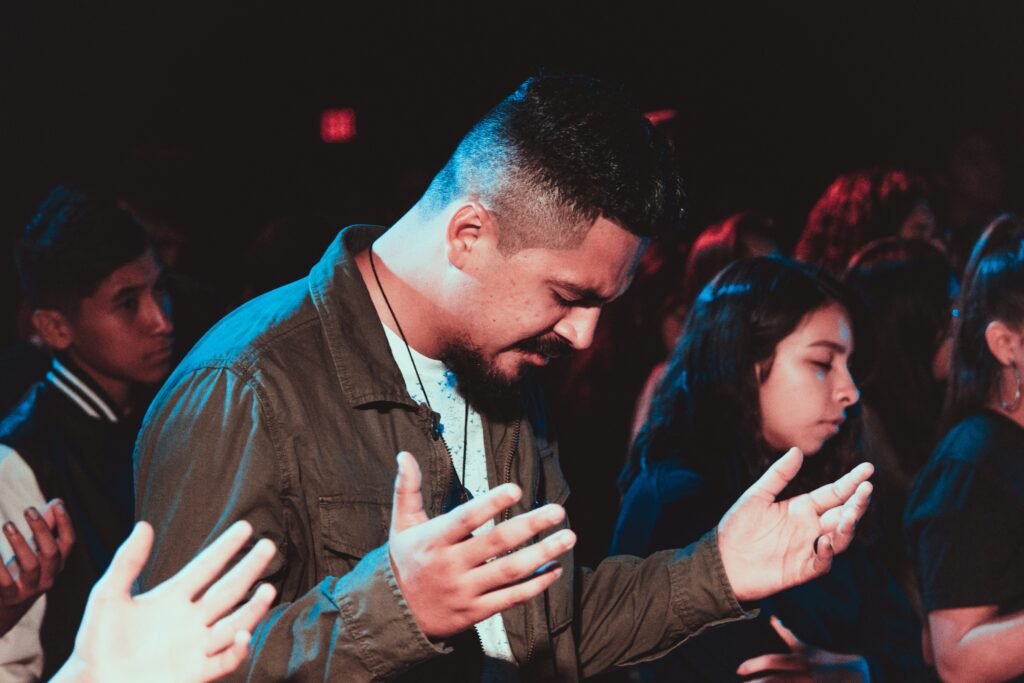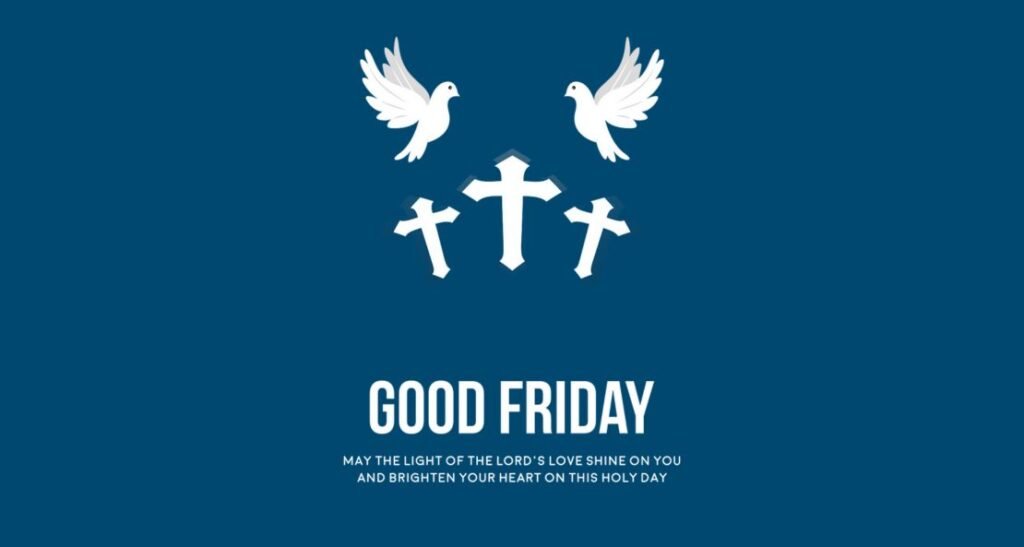Introduction to Good Friday
Good Friday, a day shrouded in solemnity and sacred reflection, stands at the heart of Christian faith, marking the crucifixion of Jesus Christ. The faithful pause and contemplate the profound sacrifice made more than two millennia ago on this day. As the church bells toll with a melancholic resonance, the air seems to carry the weight of that historic sorrow and love entwined together—a day when grace overcame tragedy and when hope was born from despair.
Good Friday is more than just a historical event for believers worldwide; it represents a crucial turning point in the story of salvation. It is when the scriptural passages come alive with the chilling reality of Jesus’ suffering and the ultimate price paid for humanity’s redemption. In the Christian calendar, this day invites an intimate encounter with the depths of faith, where the shadows of the cross loom large over the light of everyday life.
People observe this day with great reverence, inviting contemplation on themes of sacrifice, atonement, and the boundless love that is believed to have led Christ to Golgotha. The faithful walk through the solemn hours of Good Friday with a mixture of grief for the suffering endured and gratitude for the salvation they believe it has secured.

The significance of Good Friday in Christianity
One cannot overstate the significance of Good Friday within Christianity. This day is the culmination of Jesus’ mission on earth, reflecting the core Christian teaching that through Jesus’ death, sin has been atoned for and the gates of heaven have been opened to humanity. Thus, people believe that Good Friday balances the scales of eternal life, marking the piercing climax of the divine narrative of redemption.
For Christians, Good Friday is more than a historical commemoration; it is a contemporary moment of connection with the divine. It is a day when the curtain of the temple is torn in two, symbolising the end of the old covenant and the ushering in of the new. The events of Good Friday are seen as the fulfilment of ancient prophecies and the unwavering proof of God’s love, as they recount a willing sacrifice for the sins of the world.
In the fabric of Christian teachings, Good Friday weaves a pattern of hope through suffering, demonstrating that even in the darkest of times, light prevails. It is a day that gives meaning to the Christian understanding of redemption and sets the stage for the triumph of Easter Sunday. The solemnity of the day juxtaposes the joyous celebration that is to come, creating a profound spiritual rhythm that resonates through the ages.
The crucifixion of Jesus and the Seven Last Words
The crucifixion of Jesus stands as the central event of Good Friday, encapsulating the agony and victory that define this holy day. Scripture recounts the harrowing journey Jesus endured—from the judgement by Pontius Pilate to the arduous walk towards Calvary, the place of the skull. There, upon the rough beams of the cross, the Christian Saviour was lifted high, a spectacle of suffering before the eyes of the world.

As Jesus hung between heaven and earth, his final utterances—collectively known as the Seven Last Words—offered a window into his soul. These poignant statements are a mosaic of forgiveness, despair, concern, abandonment, human need, triumph, and reunion, reflecting the breadth of the human and divine experience. Each word resonates with theological depth, providing material for meditation and worship for centuries.
The Seven Last Words of Christ are often commemorated through services and musical compositions, offering a structured path for reflection on the passion of Jesus. They serve as a spiritual guide for the faithful, allowing them to walk alongside Christ in his final moments, to share in the pain, and to draw strength from his example. The crucifixion narrative, marked by these profound declarations, is a cornerstone of Good Friday observances, etching the memory of sacrifice into the heart of Christian worship.
Holy Week and the events leading up to Good Friday
Holy Week, the final week of Lent, serves as the solemn approach to Good Friday, with each day intensifying the narrative of Jesus’ final days. It begins with Palm Sunday, commemorating Jesus’ triumphant entry into Jerusalem, where he was greeted with palm branches and shouts of “Hosanna!” The week unfolds with mounting tension as Jesus cleanses the temple, disputes with religious leaders, and shares the Last Supper with his disciples—a poignant prelude to his betrayal.
The events of Holy Week are steeped in symbolism and scriptural fulfilment. Maundy Thursday, with its focus on the Last Supper, highlights themes of service and sacrifice as Jesus washes his disciples’ feet and institutes the Eucharist. The betrayal by Judas Iscariot and the arrest in the Garden of Gethsemane follow, leading to a night of trials, denials, and anguish.
Good Friday arrives as the culmination of this dramatic week, with the early morning hours seeing Jesus before Pilate, Herod, and back again, culminating in the fateful decision to crucify. The via dolorosa, or way of sorrow, traces Jesus’ path to Calvary, where the unfolding drama of the crucifixion takes place. Holy Week is an immersive journey, drawing the faithful into the heart of the passion story and preparing them for the solemnity of Good Friday and the joy of the Resurrection on Easter Sunday.
Good Friday traditions and customs around the world
Good Friday traditions and customs are as diverse as the Christian communities that observe them. In some parts of the world, the day is marked by processions and pageants that vividly portray the events of the crucifixion. In others, the faithful engage in silent prayer, fasting, and reflection, abiding by age-old customs that honour the solemnity of the day.

In the Philippines, for example, some believers partake in acts of penance that mirror the suffering of Christ, including flagellation and even voluntary crucifixion. While these extreme practices are not widespread, they are indicative of the deep devotion that Good Friday inspires. In contrast, in countries like the United Kingdom, the day might be observed with subdued church services, the veneration of the cross, and the performance of Passion plays.
Good Friday customs also extend to the arts, with classical compositions such as Bach’s “St. Matthew Passion” being performed in concert halls and churches alike. These artistic expressions provide a sensory dimension to the reflections of the day, allowing the faithful to experience the story of the crucifixion through music and imagery. The diversity of Good Friday traditions around the world showcases the myriad ways in which this day is woven into the fabric of Christian cultural expression.
Good Friday prayers and reflections
Good Friday prayers and reflections form the spiritual heartbeat of the day, offering avenues for individuals to engage deeply with the themes of sacrifice, repentance, and gratitude. Many Christians turn to the Psalms, with their rich tapestry of human emotion, to voice their innermost thoughts and to find solace in the ancient words of lament and hope.
Prayers on Good Friday often focus on the suffering of Christ, seeking to draw lessons from his endurance and to ask for the strength to bear one’s own crosses. Reflections might delve into the paradox of the cross—as a symbol of both suffering and victory—and the transformative power it holds within the Christian narrative. The faithful are encouraged to consider the implications of the crucifixion for their personal lives, examining areas where forgiveness and grace are needed.
Good Friday is also a time for communal prayer, with congregations gathering to participate in the Three Hours’ Agony, or Tre Ore, services that commemorate the time Jesus spent on the cross. During these services, the Seven Last Words are often used as focal points for meditation and homilies, providing a structured approach to reflection and worship. Through prayer and reflection, Good Friday becomes a day for the faithful to reorient their hearts towards the central tenets of their faith.
Stations of the Cross and their importance on Good Friday
The Stations of the Cross, also known as the Via Crucis, are an integral part of Good Friday observances in many Christian traditions. This devotion consists of fourteen stations, each representing a moment in the Passion of Christ, from his condemnation to his burial. The practice involves moving from station to station, offering prayers and meditations at each, effectively retracing the steps of Jesus on his way to Calvary.
This sacred journey allows the faithful to walk in solidarity with Jesus, contemplating the weight of each step, the pain of each fall, and the agony of the crucifixion. The Stations of the Cross are a tactile and visual way to engage with the story of Good Friday, making the ancient narrative resonate with contemporary believers.
In many churches, the Stations are depicted through artwork or sculptures, providing a focal point for the community’s Good Friday devotion. Some communities take the practice outside, creating a public witness of their faith and their identification with the sufferings of Christ. The Stations of the Cross are a powerful reminder of the human and divine drama that unfolded on the first Good Friday, inviting a deep engagement with the story that lies at the heart of Christian faith.
Good Friday activities for families and individuals
Good Friday provides an opportunity for families and individuals to come together in reflection and to engage in activities that deepen their understanding of the day’s significance. For families, crafting projects such as making a cross from palm fronds or creating a crown of thorns can be educational and reflective. Reading the Passion narrative together or watching a film that portrays the events of Holy Week can also be meaningful ways to connect with the story.
Individuals might choose to spend time in nature, contemplating the beauty of creation and the sacrifice made to redeem it. Writing in a journal, composing prayers, or creating art can be therapeutic and spiritually enriching activities that help internalise the themes of Good Friday. Some might choose to volunteer their time, assisting those in need as a practical expression of the love and service that Jesus exemplified.
Whether through communal services, personal devotions, or family activities, Good Friday offers a myriad of ways to engage with the sacred. It is a day that can be as solemn or as interactive as one chooses, with the common thread being a focus on the gravity of Christ’s sacrifice and its implications for the Christian life.
Good Friday recipes and traditional meals
Food has a special place in Good Friday customs, with many traditional meals reflecting the sombre mood of the day. In various cultures, fasting or abstaining from meat is common, leading to a range of seafood and vegetarian dishes that have become synonymous with Good Friday.
In Italy, for example, recipes such as “capitone” (eel) are popular, while in Spain, “torrijas” (a kind of sweet, fried bread) is a traditional treat. In the Caribbean, “bun and cheese” is a staple Good Friday food, symbolising the body of Christ and the blood of the covenant. These foods are not just sustenance but are imbued with symbolism and are a part of the ritual of the day.
For those looking to prepare a Good Friday meal, recipes tend to focus on simplicity and reflection of the day’s themes. Hot cross buns, with their distinctive cross topping, are a well-known Good Friday treat, signifying the crucifixion. Whether one chooses to partake in traditional recipes or create a simple meal in keeping with the spirit of fasting and abstinence, Good Friday is a day when food takes on a deeper spiritual significance.
What is closed on Good Friday? Understanding the observances
Good Friday observances often impact the rhythm of public life, with many businesses and institutions closing their doors in respect of the day’s solemnity. This can include government offices, schools, financial markets, and, in some places, even retail stores. The closures serve as a societal acknowledgment of the importance of Good Friday in the Christian tradition, providing space for reflection and worship.
In many countries, the quiet streets and the pause in the usual hustle and bustle reflect the contemplative nature of the day. It is an externally imposed stillness that invites individuals to turn inward and consider the deeper meanings of Good Friday. For those who do not observe the day, the closures can be a moment to learn about and respect the traditions and beliefs of their Christian neighbours.
Understanding what is closed on Good Friday and why it is a part of the broader cultural literacy around this sacred day. It is a recognition of the profound impact that the crucifixion of Jesus has had on history and society and the enduring legacy of the events that Good Friday commemorates.
The connection between Good Friday and Easter Sunday
Good Friday and Easter Sunday are inextricably linked in the Christian faith, forming the cornerstone of the Paschal Triduum. Good Friday’s sombre reflection on sacrifice and death sets the stage for Easter Sunday’s exuberant celebration of resurrection and life. This dramatic transition from mourning to joy underscores the Christian message of hope and renewal.
Easter Sunday is the day Christians celebrate the Resurrection of Jesus, the event that seals the promise of eternal life and vindicates the suffering endured on Good Friday. It is a day of jubilation, in which the sorrow of the cross gives way to the triumph of the empty tomb. The connection between these days is a profound theological statement: that out of death comes life, and from despair, hope emerges.
This interplay between Good Friday and Easter Sunday is central to Christian worship and belief. This narrative transitions from darkness to light, from defeat to victory, providing a blueprint for conquering the challenges and hardships of human life. The connection between these days is a reminder that in the Christian faith, the most profound truths are often found in the tension between opposites and that redemption is born from the depths of sacrifice.
The symbolism of the cross and its importance in Christian faith
The cross is the quintessential symbol of Christian faith, embodying the themes of Good Friday and the paradoxes at the heart of Christianity. It is at once a stark reminder of the cruelty of humanity and the transformative power of divine love. The cross’s vertical and horizontal beams intersect to create a meeting point between heaven and earth, God and humanity—a nexus of suffering and salvation.
In the Christian tradition, the cross is not merely a symbol of death; it is an emblem of life, indicative of the belief that through Jesus’ crucifixion, sin and death are conquered. It is a symbol that is venerated, worn, and displayed, serving as a constant reminder of the sacrificial love that Christians are called to emulate.

The importance of the cross in Christian faith cannot be understated. It is a focal point for worship, a symbol of identity, and a source of comfort. It represents the ultimate act of love and the hope of redemption, encapsulating the message of Good Friday and the entire Christian gospel.
Fasting and other practices on Good Friday
Fasting on Good Friday is a practice that mirrors the solemnity of the day, as believers choose to abstain from food or to eat sparingly in commemoration of Jesus’ sacrifice. This act of self-denial is a physical expression of spiritual discipline, helping to focus the mind on the events being remembered. It is a gesture of solidarity with the suffering of Christ and a way to cultivate humility and self-control.
Other practices on Good Friday may include attending special church services, participating in the Stations of the Cross, or engaging in extended periods of prayer and meditation. Some Christians choose to maintain silence during parts of the day, reflecting the grave silence of the tomb. Acts of charity and service are also common, as believers seek to live out the commandment to love one another, as exemplified by Jesus’ life and death.
These practices are varied and personal, but all serve the same purpose: to draw the faithful closer to the heart of the Good Friday message. They are expressions of a faith that is lived and felt, a commitment to embodying the values and lessons of the crucifixion in daily life.
Conclusion: Reflecting on the sacrifice of Jesus on Good Friday
Good Friday invites a deep reflection on the sacrifice of Jesus, beckoning Christians to consider the magnitude of what was endured on the cross. It is a day to grapple with the complexities of sin and redemption, sorrow and love, mortality, and eternity. The events of Good Friday are a cornerstone of Christian belief, offering a narrative that has shaped the course of history and the lives of countless believers.
In the quietude of Good Friday, there is space to contemplate the profound implications of Jesus’ death—not just as a historical event but as a present reality with personal significance. It is a time to acknowledge the darkness of human nature and the radiant possibility of transformation through divine grace. The sacrifice remembered on Good Friday is not only about the past; it is about the present and the future—a call to live a life that is reflective of the love and sacrifice that it commemorates.
As the sun sets on Good Friday and the anticipation of Easter Sunday begins to dawn, the Christian community stands in the liminal space between death and life, despair and hope. It is a time to carry the lessons of the cross forward, to live out the love that it represents, and to hold fast to the promise of resurrection. Reflecting on the sacrifice of Jesus on Good Friday is to stand at the crossroads of human frailty and divine redemption and to choose the path of life that it offers.


